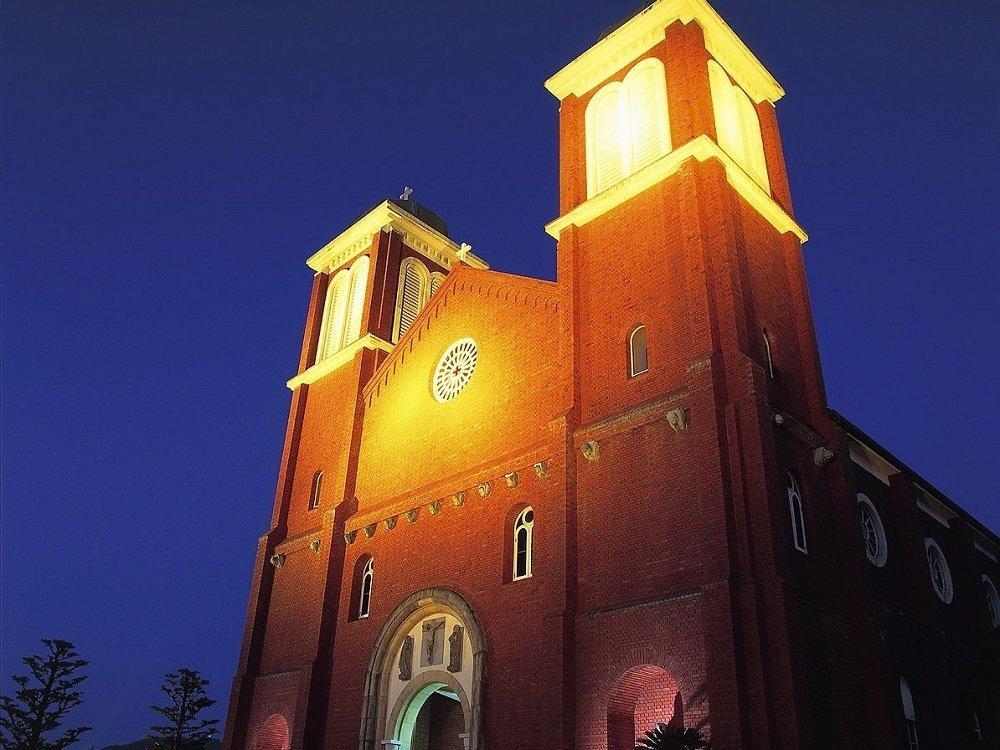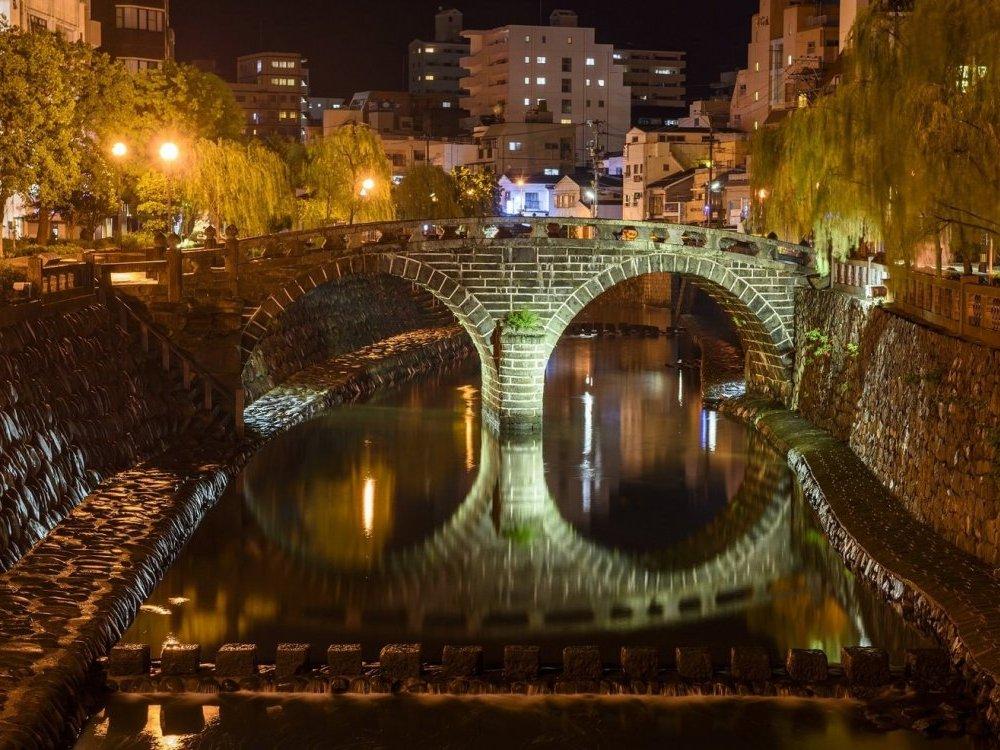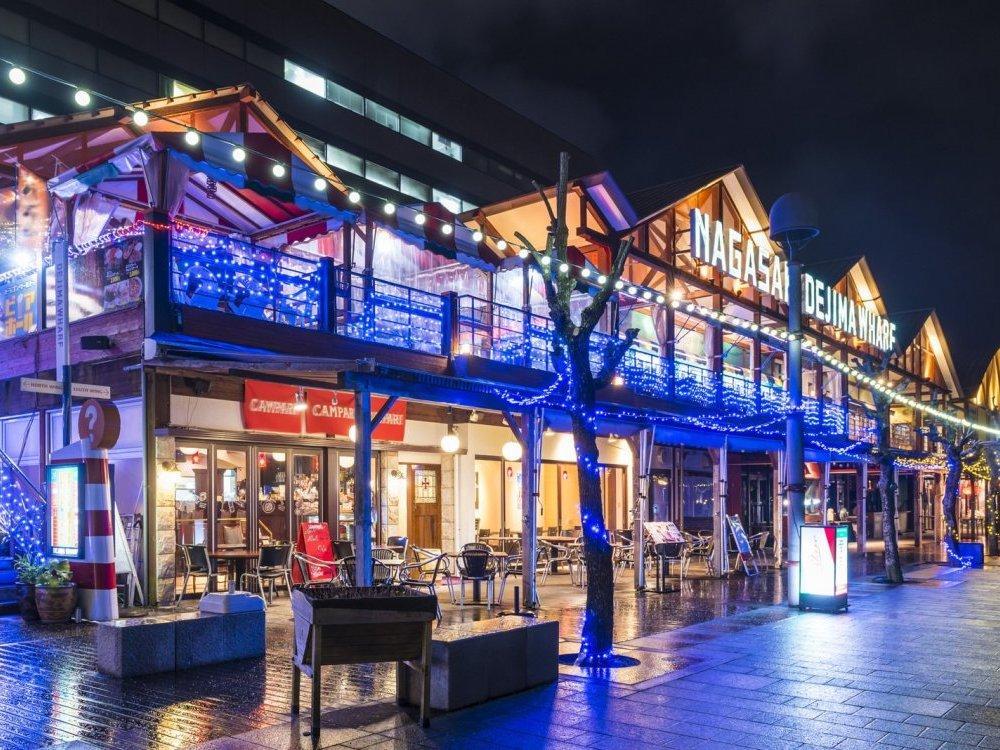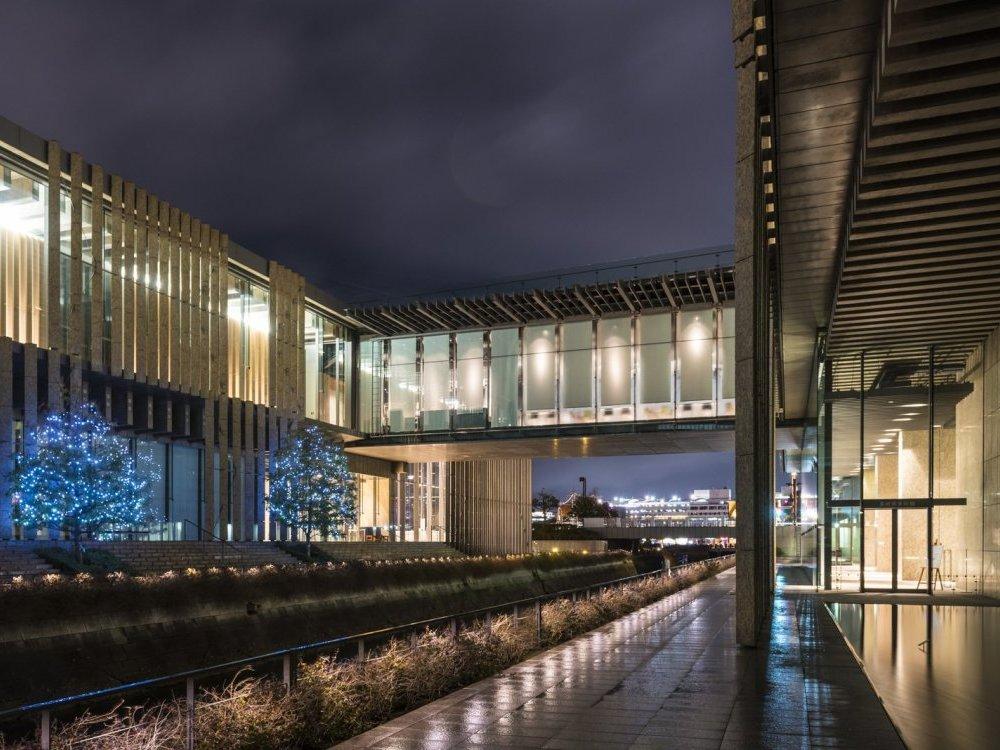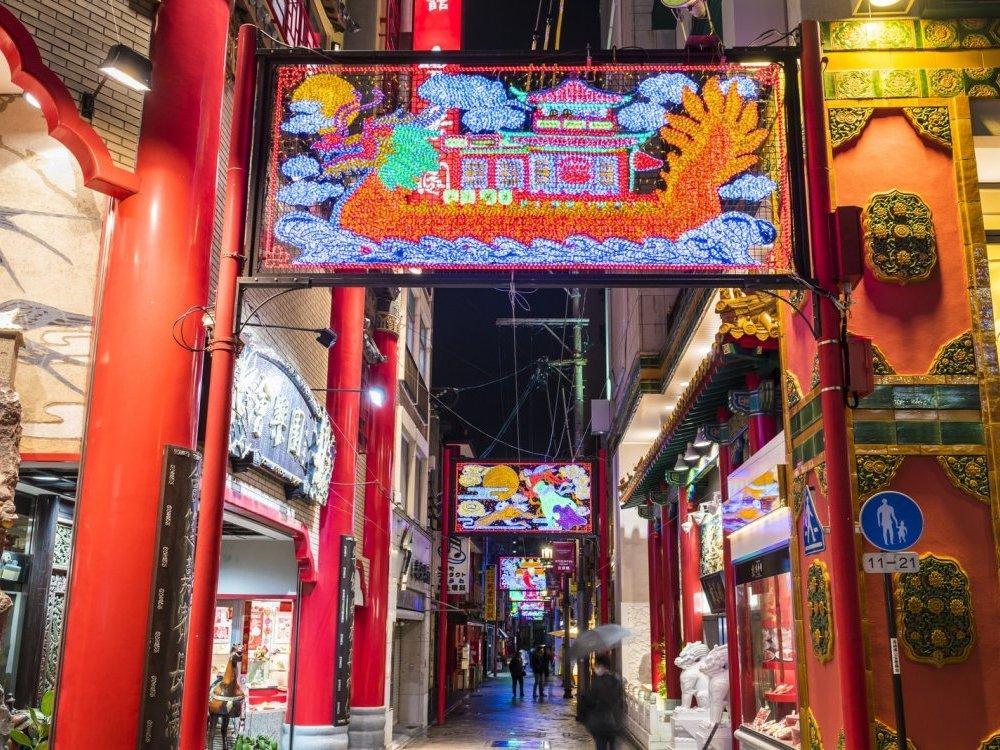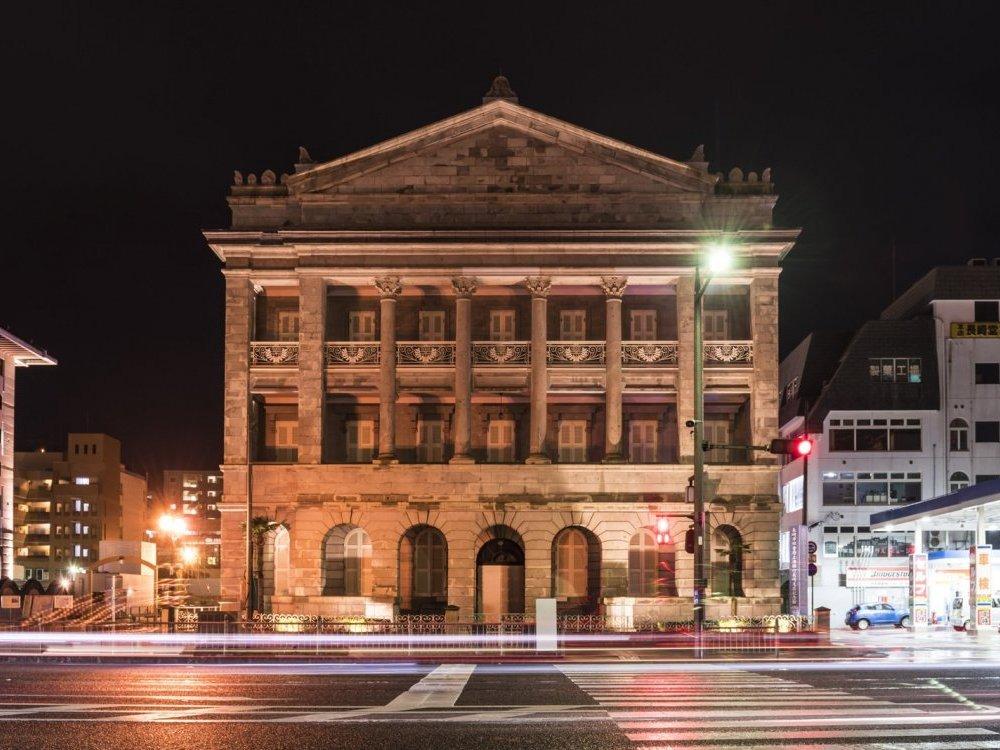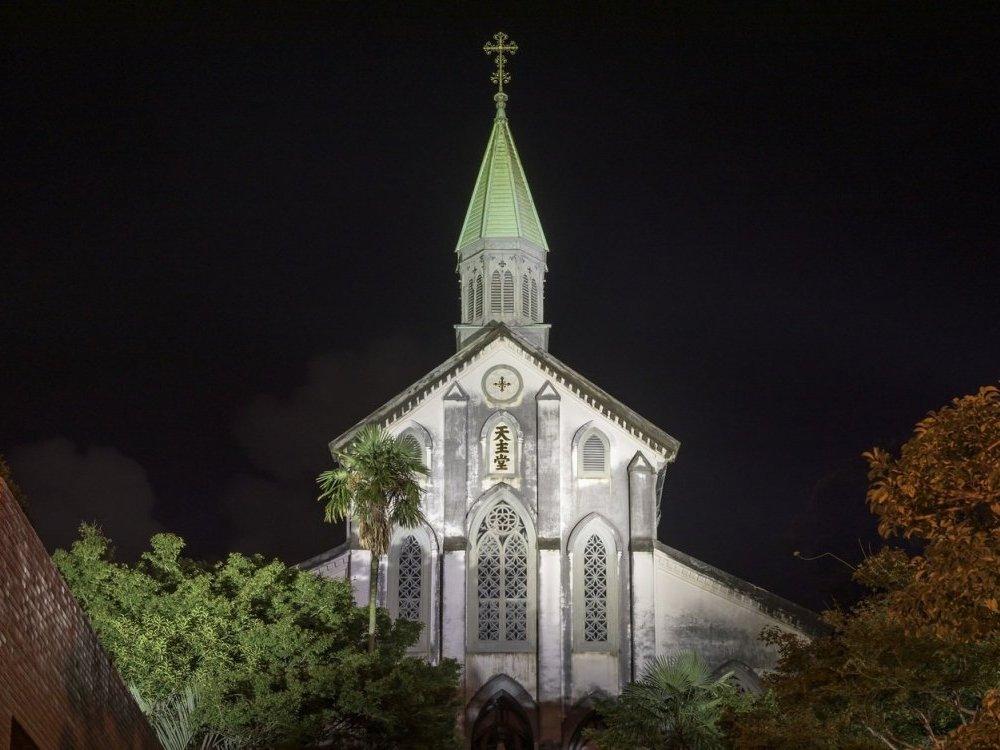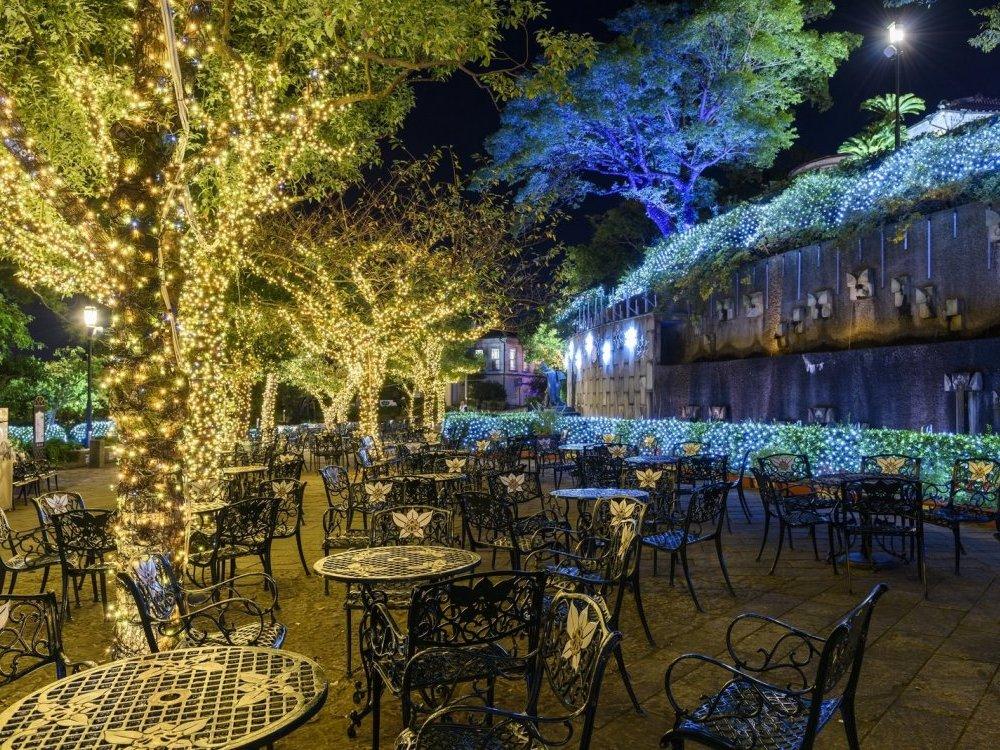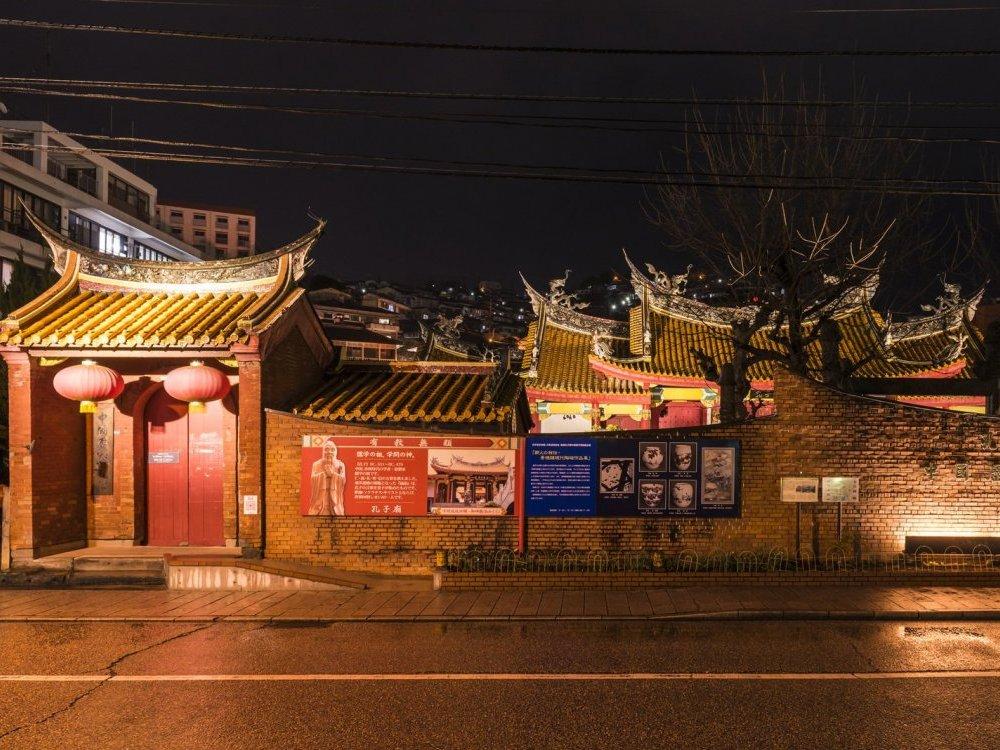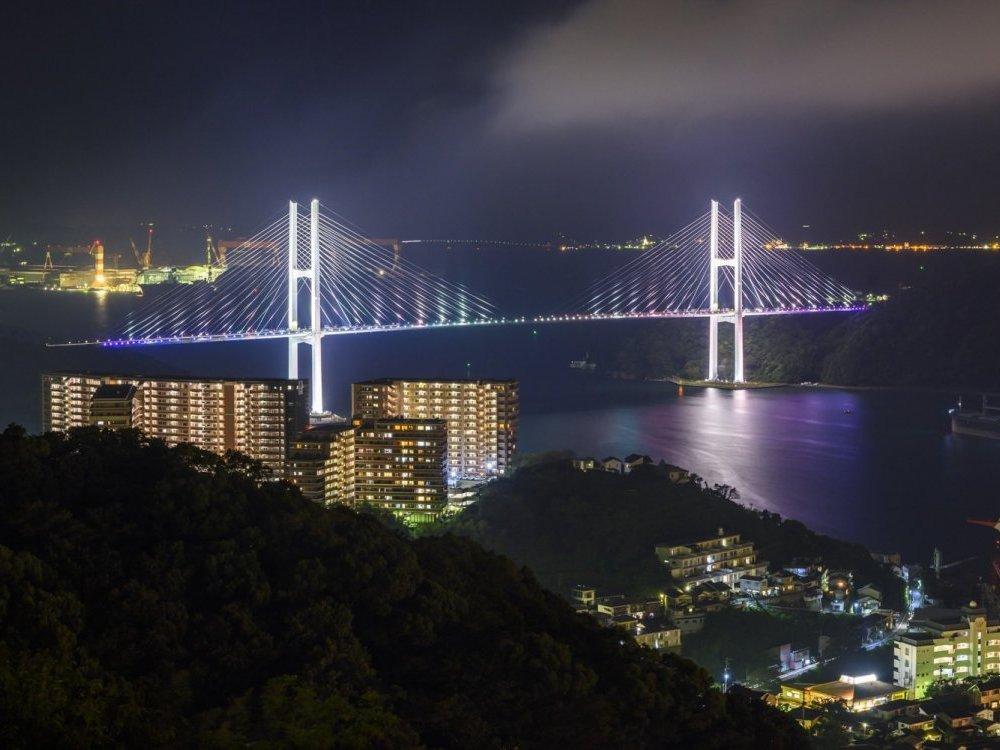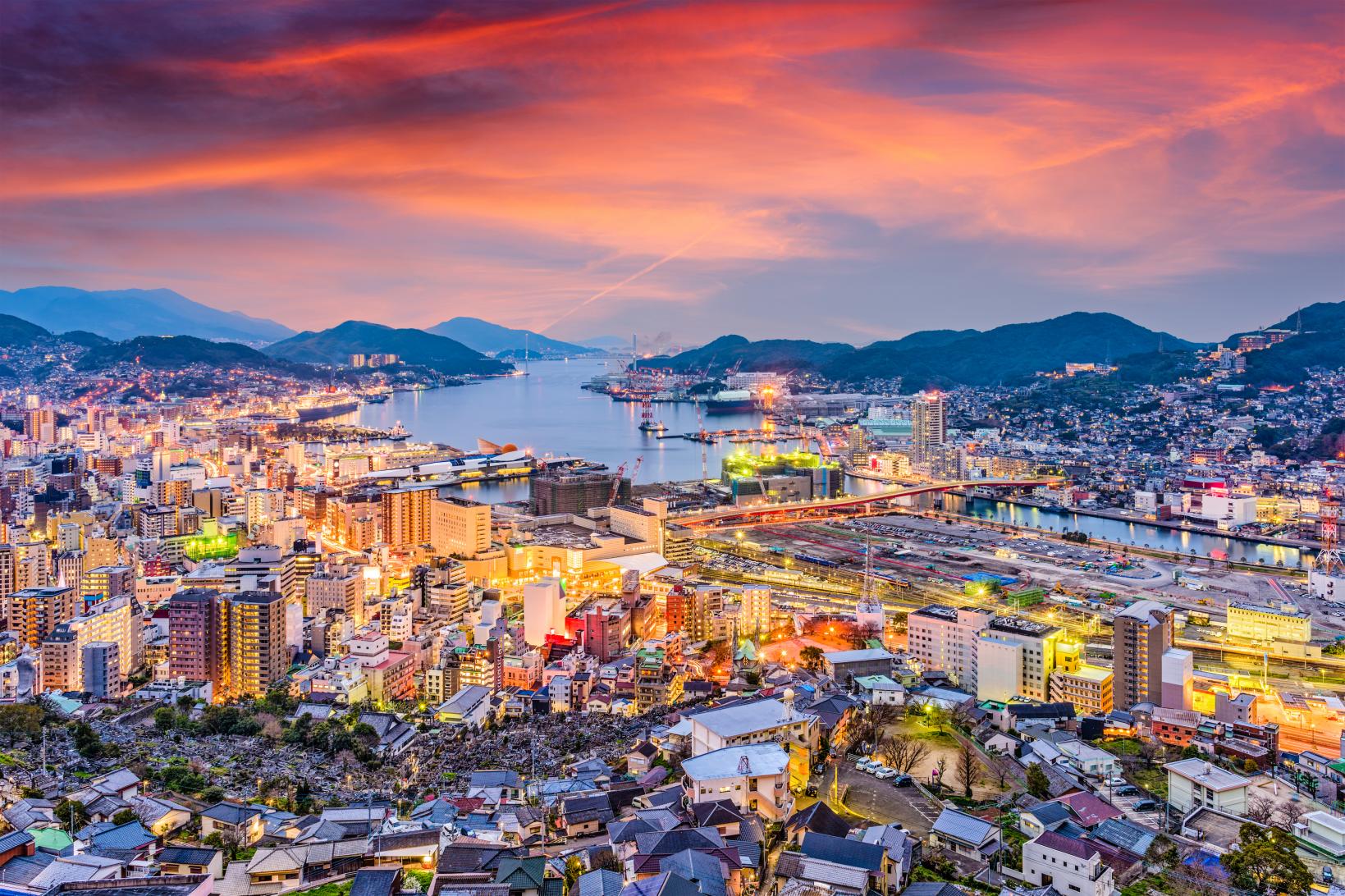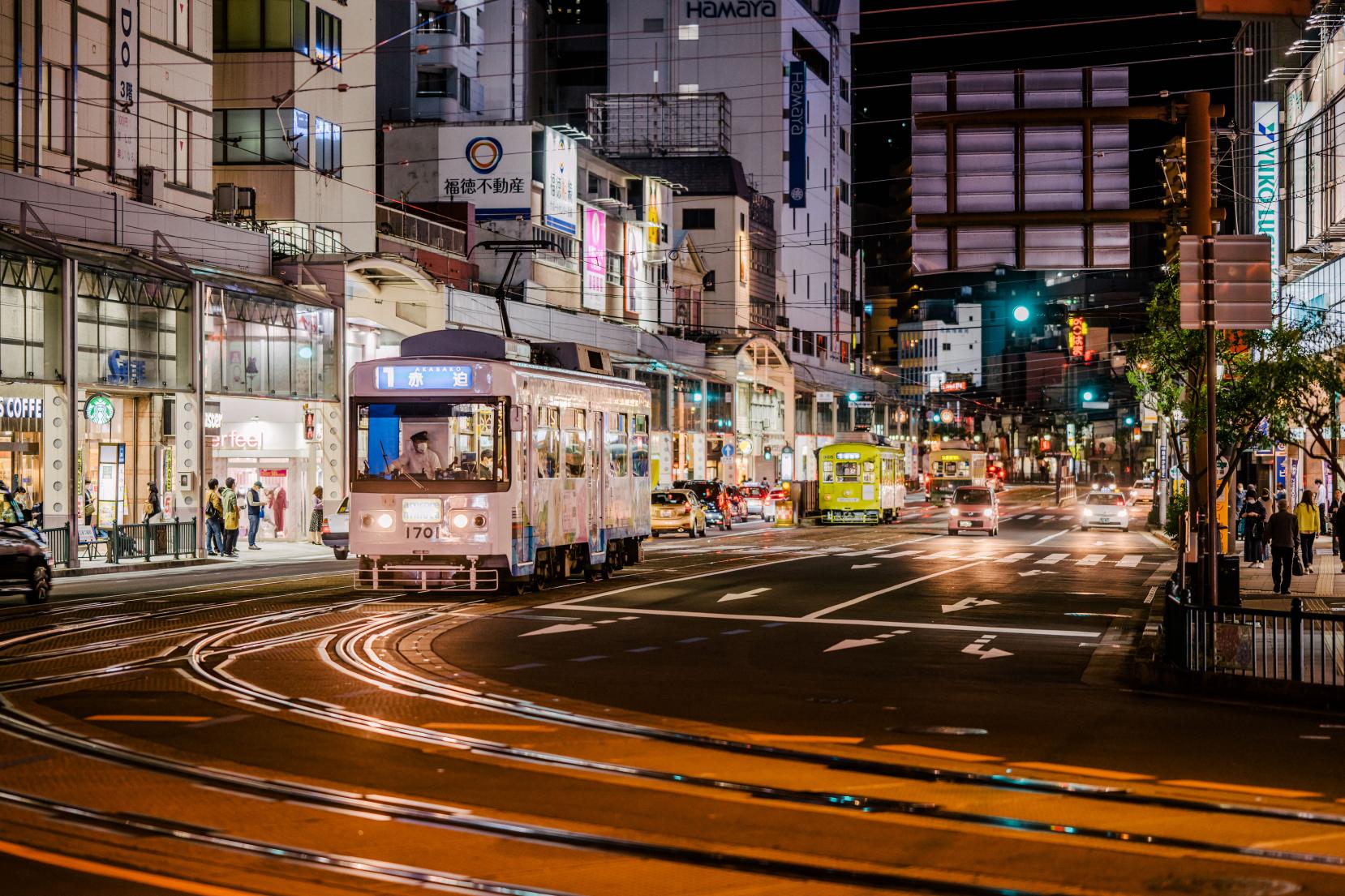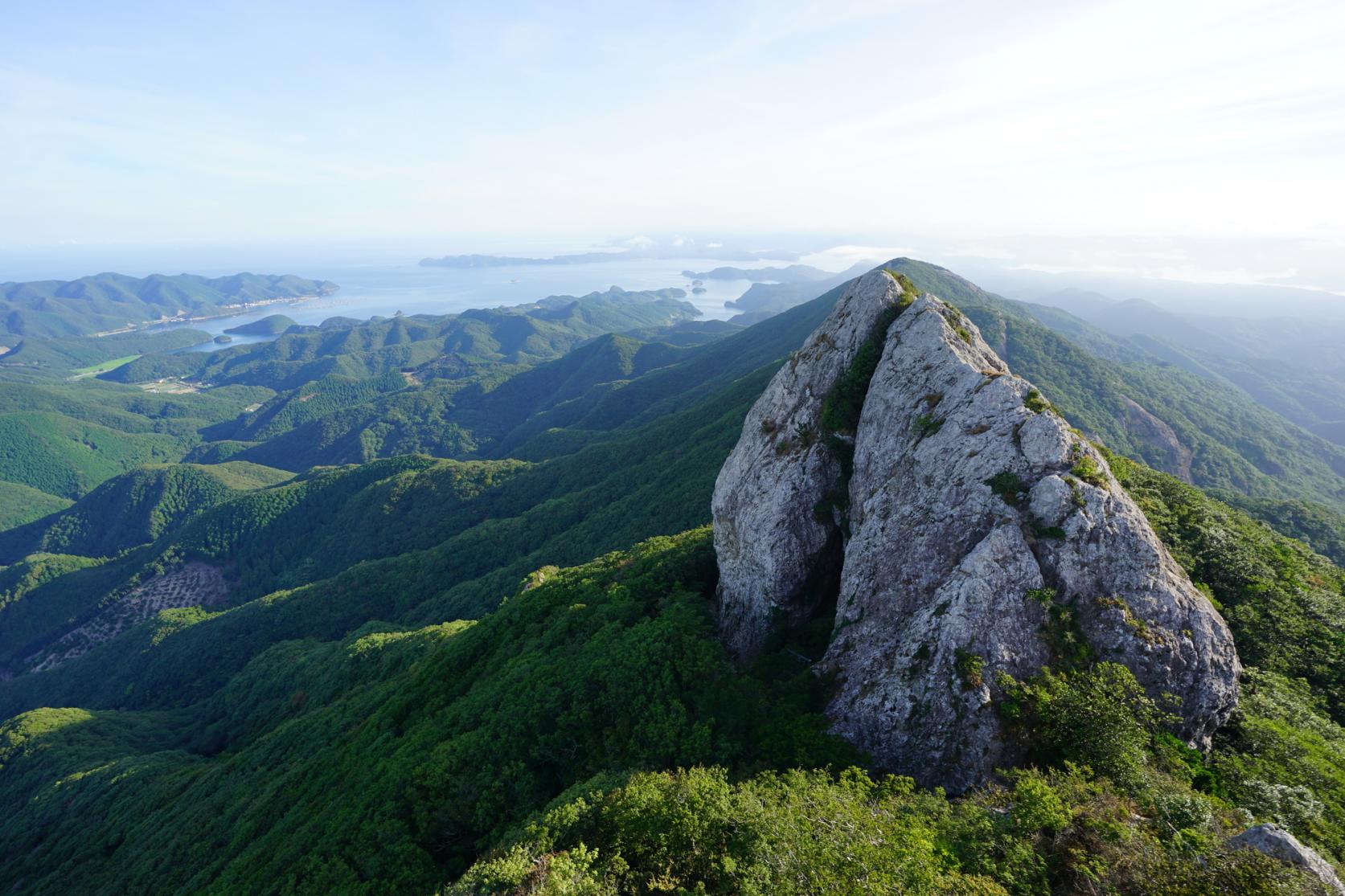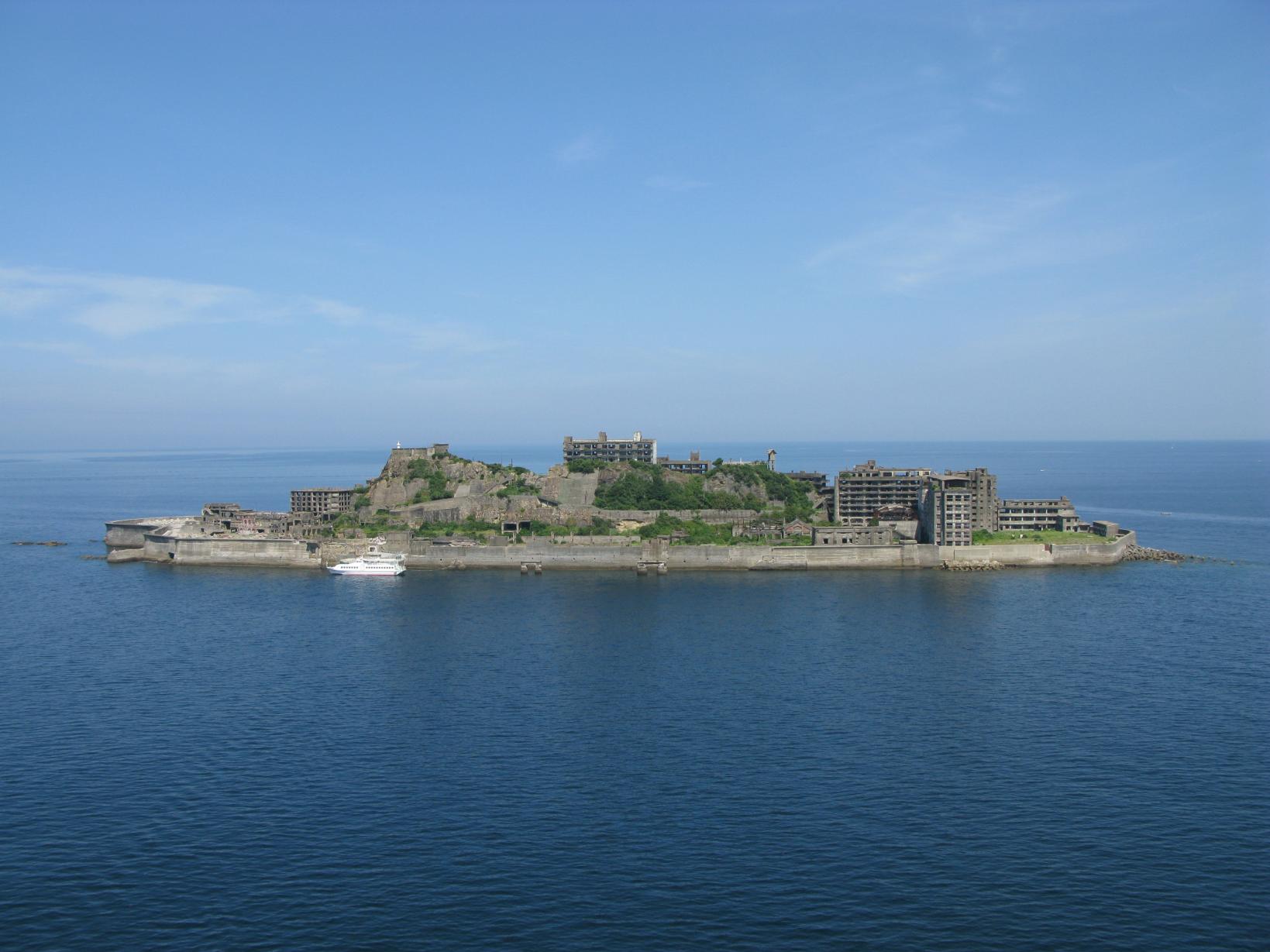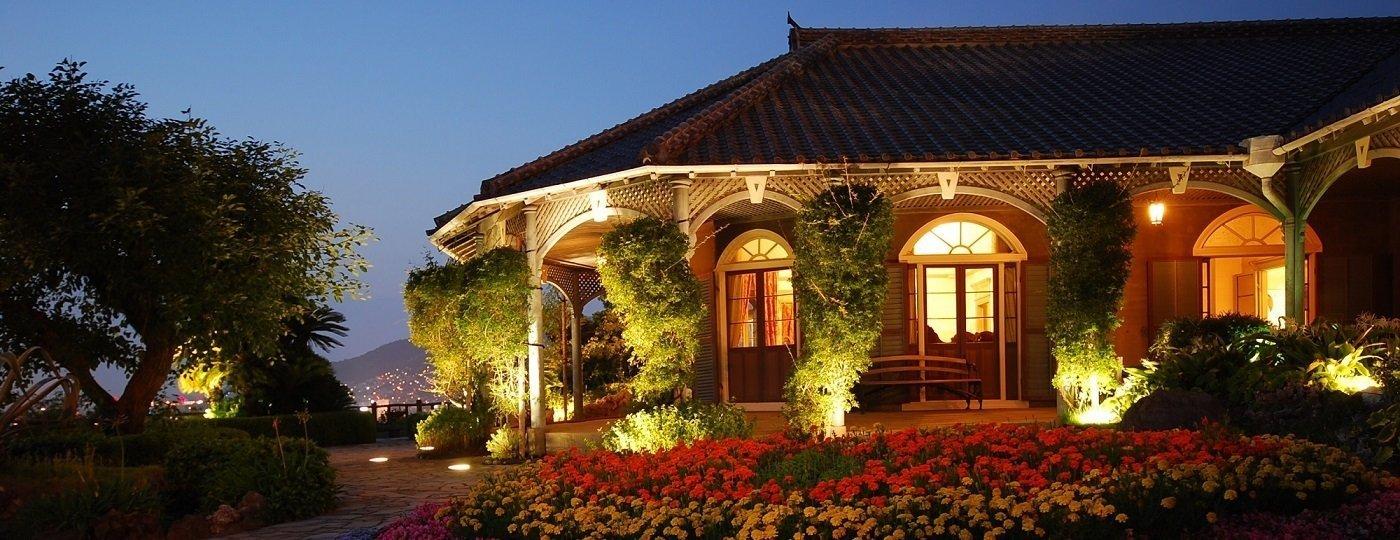
Search night walks by categories~Illuminations~
Take a close look at the illuminated architecture and tourist sites of Nagasaki, forming the city’s famous night view. Let us introduce you to some of the major sites.
Overview
- Urakami Catholic Church
- Megane-bashi Bridge (Spectacles Bridge)
- Nagasaki Dejima Wharf
- Nagasaki Prefectural Art Museum
- Shinchi Chinatown
- Former Hong Kong Shanghai Bank Nagasaki Branch Museum
- Oura Catholic Church
- Glover Garden
- Confucius Shrine Koushi-byo and Historical Museum of China
- Megami Ohashi Bridge Venus Wing
Urakami Catholic Church
The church is officially called Urakami Catholic Church, but tends to be known as Urakami Tenshudo. Building work started in 1895, with the intention of building the greatest cathedral in the East, and the church was completed in 1926. It was destroyed in the atomic bombing of Nagasaki, and the new building, in the same Romanesque style, was completed in 1959. The tall, orange-colored exterior gives a striking impression to visitors.
Megane-bashi Bridge (Spectacles Bridge)
Built in 1634 by the Chinese Monk Mozi of Kofukuji Temple, this 2m long, 3.65m wide, and 5.46m high bridge is famous as Japan's first arched stone bridge. The reflection of the bridge in the water's surface creates two concentric circles in the shape of "spectacles," giving the bridge its name. When the bridge is illuminated at night, the light reflects these spectacles even more clearly on the water's surface.
Nagasaki Dejima Wharf
Built in the Nagasaki Port Bay Area, this two-story commercial facility on the waterside houses observation decks and many restaurants. Here visitors can enjoy great views of Mt. Inasa, the lights of Seaside Park, as well as boats coming and going in the port.
Nagasaki Prefectural Art Museum
Based on the concept of a “breathing museum,” this museum, designed by Kengo Kuma, is illuminated at night along with the Nagasaki Seaside Park and can be enjoyed as a beautiful part of many night views. The lights of Nagasaki Port and the coastal surroundings can also be enjoyed from the museum’s roof garden as well.
Shinchi Chinatown
During the transition from the Bakufu Shogunate to the Meiji Government, the system of segregating Chinese residents in Chinese Settlements was abolished and Chinese residents began moving into this area. Nowadays, lined with Chinese restaurants and souvenirs from China, this uniquely Nagasaki Chinatown is full of decorative and colorful illuminations, neon lights, and atmosphere sure to fascinate its nighttime visitors.
Former Hong Kong Shanghai Bank Nagasaki Branch Museum
Designated as an important cultural asset by the Japanese government, this building was designed by the talented architect Kikutaro Shimoda. Built from concrete in the classical Grecian style, this museum is lit up at night as part of the stone-built western buildings on show. The color of the building as the light hits it gives off its deep history.
Oura Catholic Church
Designated as a national treasure, this church is the oldest in Japan. Built in 1864 and expanded in 1879, the church was the location of the “rediscovery of believers” of Christianity. Although originally wood, the building itself is made of brick and its white glow gives off a striking impression from its surrounding shadows when it is illuminated at night.
Glover Garden
The former Glover, Ringer and Alt residences have long been designated as important cultural assets, and these and other famous western-style buildings have now been moved and rebuilt here. Visitors can enjoy not only the beautiful illumination of the buildings, but also amazing panoramas over the city.
Confucius Shrine Koushi-byo and Historical Museum of China
The shrine began with the donation of some Confucian artifacts, and was constructed by the Ching dynasty government and people of Chinese heritage in 1893. It is joined to the Historical Museum of China. At night the lanterns are lit, illuminating the main hall and the gate of the shrine in bright red colors, giving a powerful, passionate impression.
Megami Ohashi Bridge Venus Wing
With a total length of 480m in its central section, the Megami Ohashi Bridge is the sixth longest cable-stayed bridge in Japan, and it is a symbol of Nagasaki, as it connects Kibachi-machi and Tomachi. The bridge has a footpath along it, from which visitors can enjoy the sort of panorama only normally available by climbing a mountain. The lights from the center of Nagasaki City, as well as those from the hotels in the Tateyama area, provide a perfect contrast to the darkness of the water’s surface. As ships travel in and out of the bay from underneath the bridge, visitors get a true sense of the port, and the bridge should certainly be part of any recreational drive.
NEXT



